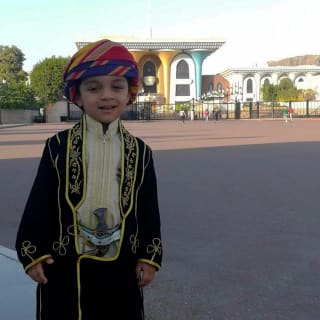
Salalah
Salalah
The fertile plain around the modern city of Salalah in southern Oman is a popular destination, not only for many Omanis from the north of the country but also for Europeans and other travelers worldwide. The region´s unique climate around the capital of the province draws many visitors to the area. Every year during the monsoon season from mid-June to September, the incredibly fertile soil of the region is heavily watered by the monsoon rains. However, the rainfall here differs from other regions of the world that share a monsoon season, because the rains come without monsoon winds. In this special climate, the season is without torrential rains and strong winds. The rainy season brings a fine misting rain that can last all day. If there is no rain, then a thick fog moves over the area surrounding the city. This gentle form of moisture makes it easier for water to penetrate the soil and helps the city’s banana plantations thrive.
The city of Salalah – a modern city in historical garb
First and foremost, the city of Salalah, the image of which is that of a large green oasis, is a modern metropolis. The city center is dominated by concrete structures housing government agencies and other important city institutions. Limestone houses, well known in Arab history, historically characterized the cityscape of Salalah, but today are only found in the historic district of Al-Hafsah. Lovers of Arab history will find the historic district of Al-Hafah a perfect place to explore, full of charming cozy traditional Arab streets. The Al-Hafah district has much to offer visitors. It houses the old Frankincense Souq, the old Sultan’s Palace and various small government buildings. The city is home to the Archaeological Park, created on the site of the historic settlement of Al-Baleed. Tourists can visit fascinating archaeological sites and the site’s well-curated museum. Additionally, you have the unique opportunity to visit the tomb of a renowned Muslim prophet, Nabi Amran. The prophet’s tomb may also be entered by non-Muslims. However, women must wear a headscarf and shoes should be removed before entering the facility.
Salalah is a holiday for all the senses
If you stay in Salalah, do not miss the chance to take a long walk through the tropical plantations of the city. There are papaya and coconut palms planted together along the paths with the banana palms. These palms offer their soothing shade to the vegetables and other plants closer to the ground. Horseradish trees, limes, sugarcane, and Indian almonds can also be found here. At many small stands built on the larger paths in the gardens, you can sample and enjoy some of the small edible treats of the region.
Discover Oman with experts who have called it their home
Your dream holiday, tailor-made by experts.
We don't just know Oman from books, we visit the country several times a year to experience the culture, landscape and people first-hand.
From your first enquiry to your return home, we are there for you personally - by phone, email or WhatsApp, whenever you need us. Our trips are as unique as you are: individually planned and provided with exclusive privileges and high-quality arrangements that will make your trip unforgettable.
Experts for your Oman trip









